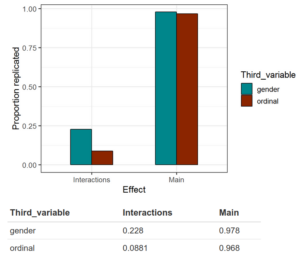I stumbled upon another physicist venturing into someone else’s field and getting things right. I quote from Pinker’s Better Angels:
In the early 1950s, two eminent British scholars reflected on the history of war and ventured predictions on what the world should expect in the years to come. One of them was Arnold Toynbee (1889–1975), perhaps the most famous historian of the 20th century. Toynbee had served in the British Foreign Office during both world wars, had represented the government at the peace conferences following each one, and had been chronicling the rise and fall of twenty-six civilizations in his monumental twelve-volume work A Study of History. The patterns of history, as he saw them in 1950, did not leave him optimistic:
In our recent Western history war has been following war in an ascending order of intensity; and today it is already apparent that the War of 1939–45 was not the climax of this crescendo movement.1Writing in the shadow of World War II and at the dawn of the Cold War and the nuclear age, Toynbee could certainly be forgiven for his bleak prognostication. Many other distinguished commentators were equally pessimistic, and predictions of an imminent doomsday continued for another three decades.2The other scholar’s qualifications could not be more different. Lewis Fry Richardson (1881–1953) was a physicist, meteorologist, psychologist, and applied mathematician. His main claim to fame had been devising numerical techniques for predicting the weather, decades before there were computers powerful enough to implement them.3 Richardson’s own prediction about the future came not from erudition about great civilizations but from statistical analysis of a dataset of hundreds of violent conflicts spanning more than a century. Richardson was more circumspect than Toynbee, and more optimistic:The occurrence of two world wars in the present century is apt to leave us with the vague belief that the world has become more warlike. But this belief needs logical scrutiny. A long future may perhaps be coming without a third world war in it.4Richardson chose statistics over impressions to defy the common understanding that global nuclear war was a certainty. More than half a century later, we know that the eminent historian was wrong and the obscure physicist was right.This chapter is about the full story behind Richardson’s prescience: the trends in war between major nations, culminating in the unexpected good news that the apparent crescendo of war did not continue to a new climax. During the last two decades, the world’s attention has shifted to other kinds of conflict, including wars in smaller countries, civil wars, genocides, and terrorism; they will be covered in the following chapter.
An interesting polymath! :)
Further reading:
- https://en.wikipedia.org/wiki/Lewis_Fry_Richardson
- http://www.robertnowlan.com/pdfs/Richardson,%20Lewis%20Fry.pdf
- There is only one biography I could find, but it isn’t on Libgen… yet.
A very nice quote is:
Another advantage of a mathematical statement is that it is so definite that it might be definitely wrong; and if it is found to be wrong, there is a plenteous choice of amendments ready in the mathematicians’ stock of formulae. Some verbal statements have not this merit; they are so vague that they could hardly be wrong, and are correspondingly useless.
(Apparently from Mathematics of War and Foreign Politics, but the book wasn’t on Libgen, so I could not verify this.)
